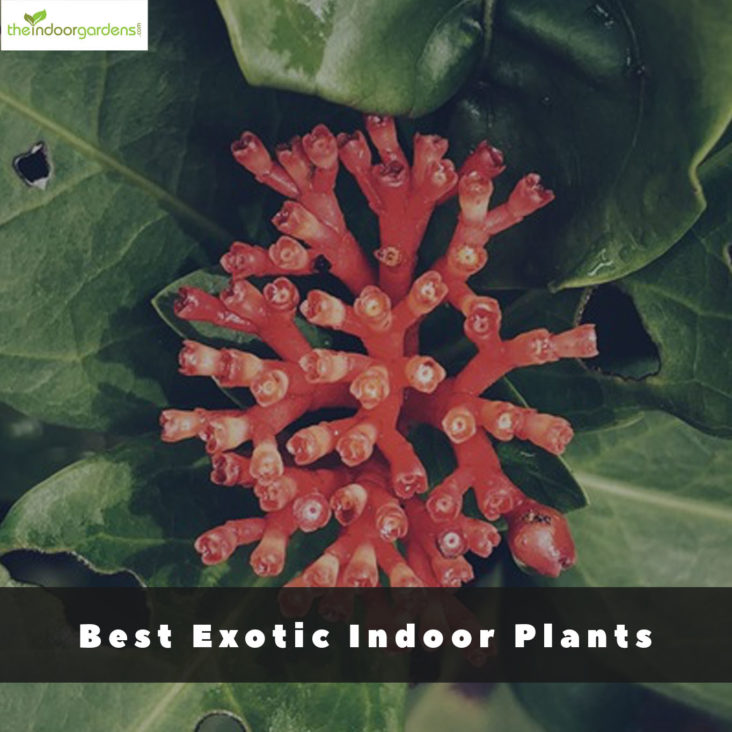As more people every day discover the joy of indoor gardening the same question keeps coming up; “What should I grow?”. While it’s a deeply personal question that relies on your goals and abilities, it’s always fun to look at some more exotic options. There are a lot of different plants out there, and some even more experienced gardeners might not be familiar with. So, in that spirit, here are the 10 best exotic indoor plants that you can start growing, in our opinion at least.
How To Care For Exotic plants
Many people think that exotic plants are difficult to care for, but that’s not always the case. While some can be, many are actually quite easy to care for and can be grown by any level of gardener.
We’ll call out a few in this article that are particularly easy to grow and care for. If you’re looking for an easier plant to grow try out one of these. That’s not to say any of the other ones are very difficult though, each of these is perfectly doable for most gardeners.
The key thing to remember is your plant’s natural environment. If your plant naturally grows in a dry location then you want to be extra careful not to overwater. On the other hand, a plant from a rainforest probably requires much more water. Keep your plant’s ideal climate in mind, and do your best to mimic this in your garden for optimal growth.
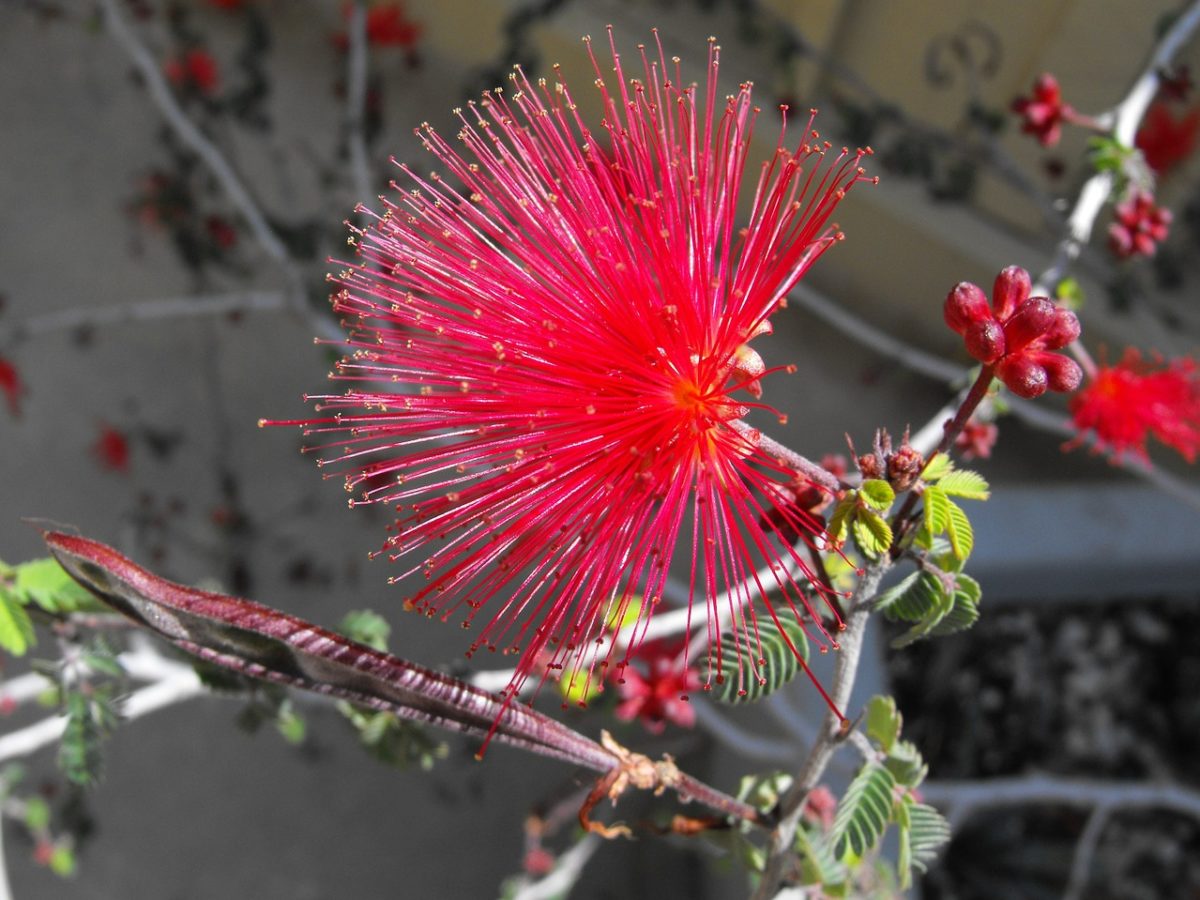
1. Fairy Duster (Calliandra eriophylla)
With their pearly and sparkly flowers, fairy dusters are charming and pleasing to grow inside your home. It can also attract a number of beautiful birds like butterflies and hummingbirds if grown outside on a porch during the summer.
A hardy plant, fairy dusters tend to grow well in arid and dry conditions. While it requires plenty of sunshine, it can also be easily grown indoors by placing it in a spot that receives abundant indirect sunlight. The soil needs to be a well-draining potting mix that must not remain damp or wet, while also being fertile, well-aerated, and having a pH range of around 6 – 7. To organically enrich the soil, you can add peat moss or compost to the potting mix.
As it does not require much water, water only when the soil is dry to the touch. It is a desert plant after all so will do well with thorough but infrequent watering. While there is no need to prune the plant, you can trim it down a bit to stop dense growth.
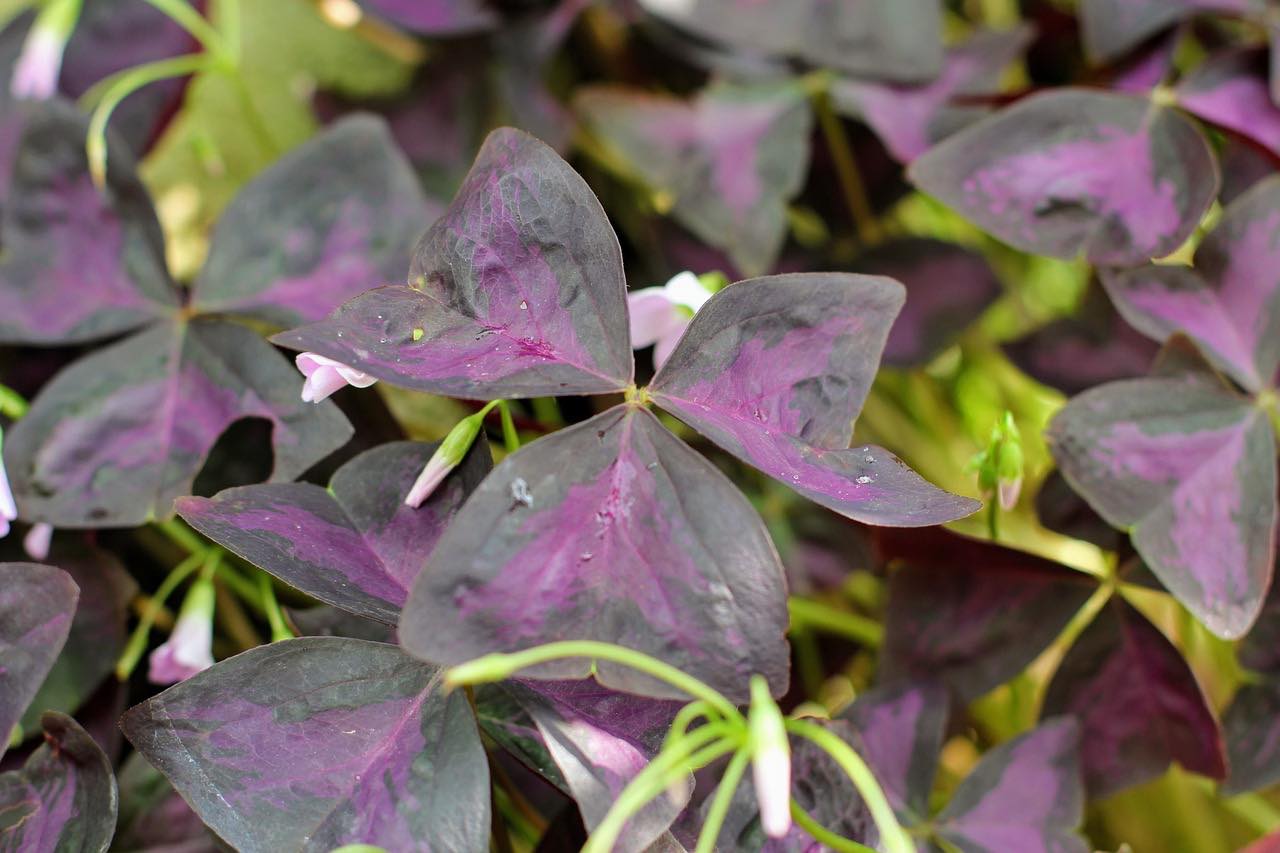
2. Oxalis
Easy to grow indoors, oxalis are perennial plants that feature distinctly beautiful triangular leaves. An interesting property is that oxalis leaves close up during nighttime and reopen during the daytime.
Oxalis plants grow well in most climate conditions; just give them lots of sunlight. They do best with bright indirect to bright direct sunlight, so make sure to give them a sunny spot to live. Keep an eye on them if you experience dark winters as this is the most likely time for light-related issues.
To achieve lush growth, oxalis plants require fertile and well-draining potting soil that is not dense, is airy and fertile, and has a pH range of about 6 – 7. Maintain a regular watering schedule to ensure that the soil is evenly moist, but not wet. Most gardeners report watering their oxalis roughly every 1-2 weeks.
After the blooming season, the plant goes into dormancy before growing back again. During this time do not prune the leaves and cut back on watering and feeding. For a striking plant that stands out, get a black oxalis plant that features beautiful dark purple leaves.
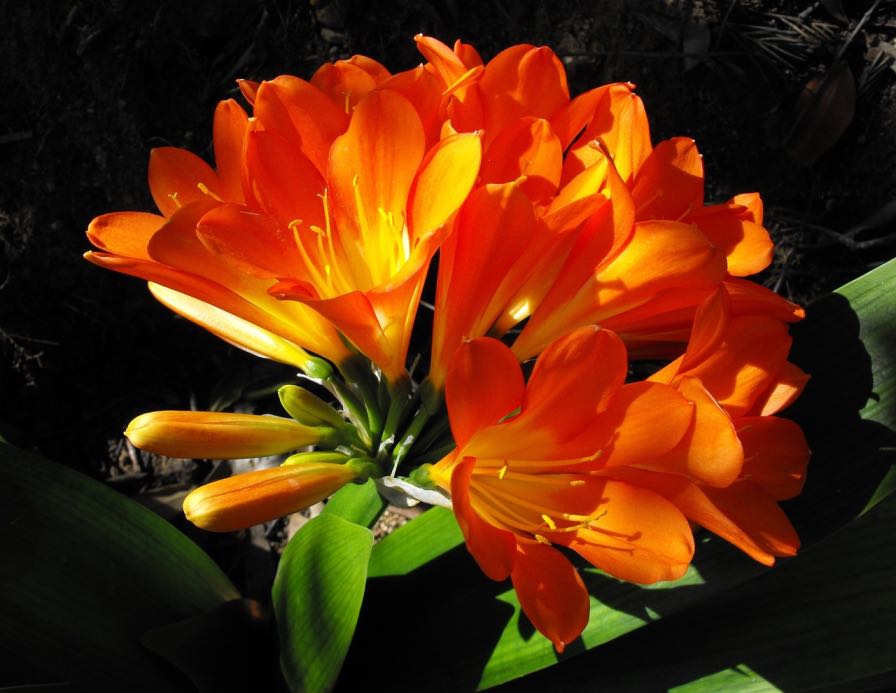
3. Kaffir Lily
Also known as clivia, the kaffir lily is a majestically magnificent plant that has strap-like leaves and features colorful blossoms. However, as they are known to be poisonous to pets and children, keep them in an area that is out of reach.
The Kaffir lily grows well in abundant, indirect sunlight. Too much direct sunlight can end up frying the leaves of the plant, so place them in an indirectly sunny spot like an eastern-facing window. The plant also needs good ventilation and medium air humidity.
Kaffir lilies prefer to stay a little dry, so opt for a well-draining potting mix that is airy, loose, and not dense. You can also add peat moss and sand to help in maintaining drier soil as well as aid in drainage.
Only water when the soil is dry to the touch and then let the water drain between waterings. If the green leaves start looking pale then you might be over-watering your lilies. While kaffir lilies rarely need pruning, you can still trim off any dead leaves and flowers. If you see mealy bugs on the plant, the commonly seen pest, use a cotton ball dipped in alcohol to wipe them away.
For the best blooms, keep your lily cool for roughly a month in the early fall. You can actually leave the plant outdoors in cooler weather before the first frost. This will encourage the plant to bloom once you bring it indoors, and helps stimulate the plant’s natural environment. When properly cared for a kaffir lily can bloom for several years.
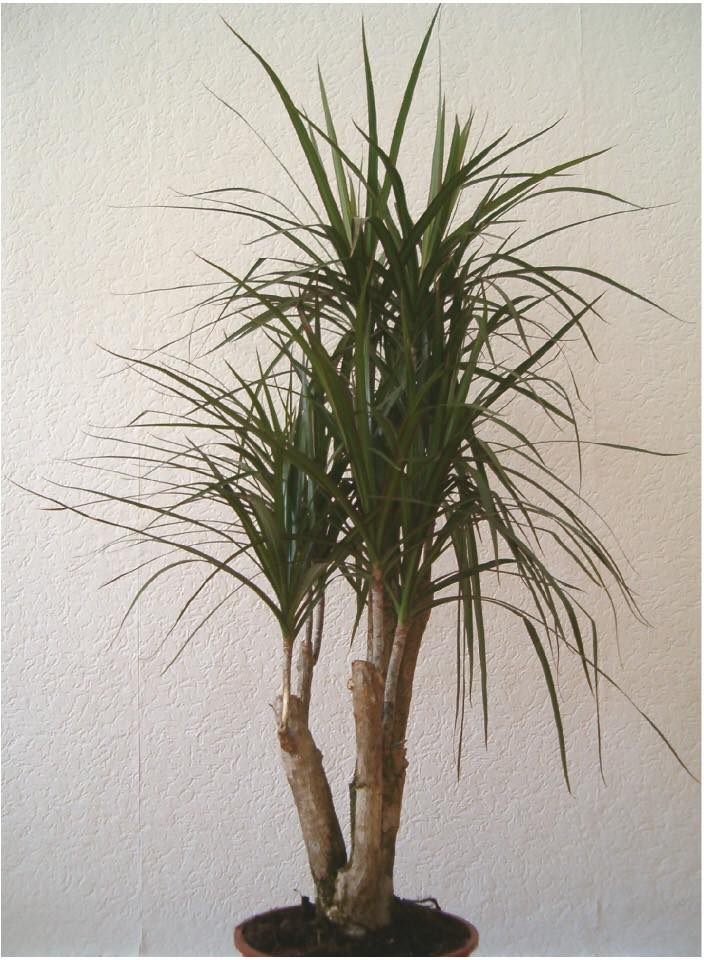
4. Madagascar Dragon Tree
Impressively tall plants with twisted stems, the Madagascar dragon tree is hardy, durable, and can be easily grown indoors. Their two-toned leaves, featuring an intense red border, bring natural beauty into houses while removing chemicals and pollutants from the air.
Keep the dragon tree in a spot that is out of reach as the plant is poisonous to pets and small children. The dragon tree requires medium amounts of sunlight for 6 – 8 hours along with good ventilation and medium air humidity. Dragon trees prefer well-draining soil, add some small pebbles to the bottom of their container to promote this drainage.
As the plant is tolerant to drought conditions water only when the soil is dry to the touch. Over-watering the plant can cause rotting and mildew. Only prune back necessary shoot tips to keep the height and growth of the dragon tree under control.
Properly cared for, the dragon tree can last over a decade and grow to well over 6 feet tall.
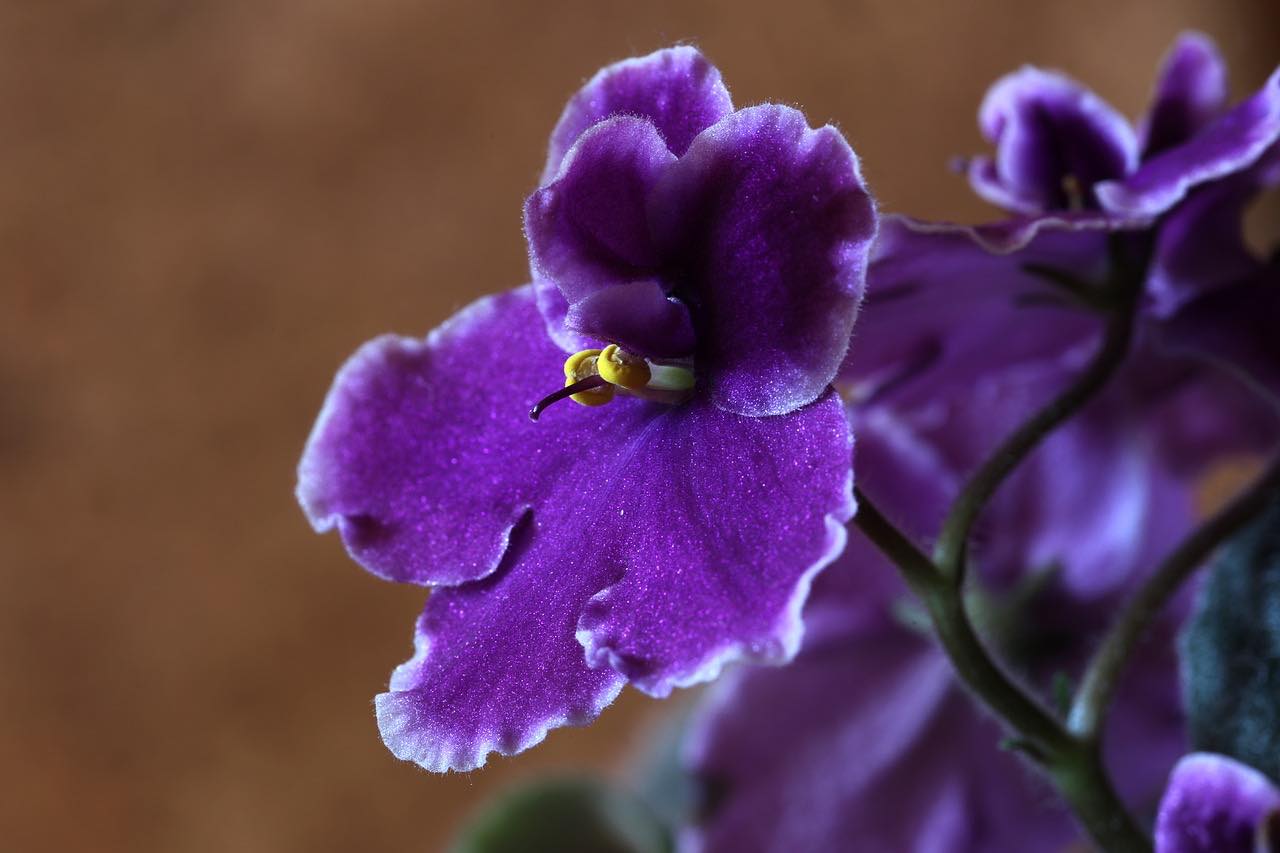
5. African Violets
Available in many varieties and colors, African violets are great indoor plants that instantly brighten up any dull corner. This beautiful and striking plant is great for pet owners and parents as it is not toxic.
African violets thrive when they receive indirect sunlight for 6 – 8 hours, high air humidity, and good ventilation every day. Feed the African violets plant with mild liquid fertilizer once every two weeks. While certainly a bit intensive to maintain, the reward is well worth it for this beautiful plant.
While you can use good quality all-purpose potting mix, you can also make your own potting mix by mixing equal amounts of peat moss, vermiculite, and perlite together. Keep the soil evenly moist, well-drained, and at a pH level of around 5 – 6. Water the violets when the top layer of the soil feels dry. To ensure the soil is thoroughly wet, watch for water to begin to leak from the container’s drainage holes. This is a sure sign that the soil is thoroughly saturated.
Prune away dried or dead leaves and flowers. You can also use pruning to promote new and bushier growth. Remember to re-pot your African violets every year to ensure that their soil has enough nutrients to support continued growth. Hard-working gardeners will be rewarded with a plant that is absolutely stunning and hard to beat in beauty.
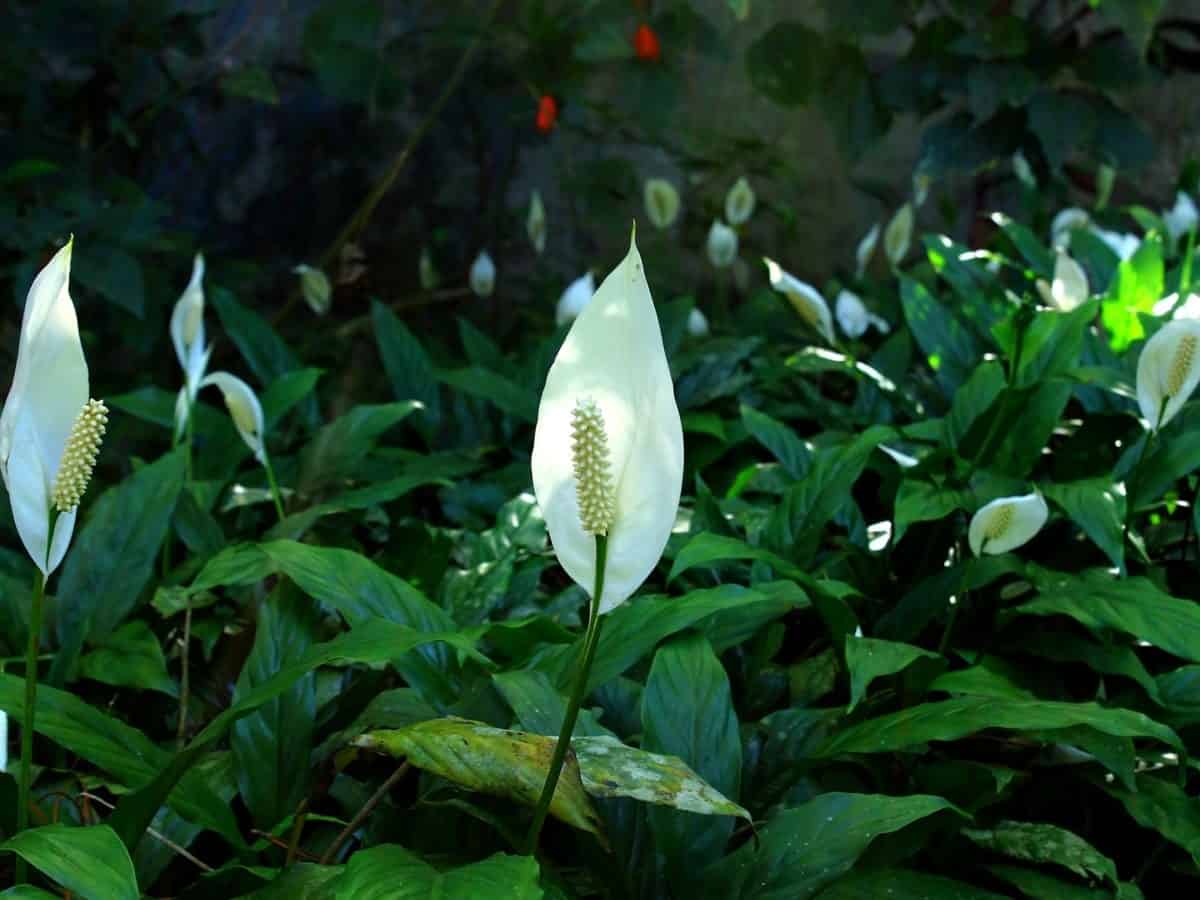
6. Peace Lily
With their brilliant white flowers and glossy leaves, peace lilies are elegant plants that require low maintenance and make for great indoor plants. The plant’s leaves droop down when thirsty and perk up nearly immediately after watering. This makes it very easy to care for and helps guide gardeners on watering.
For the best growth, place it under indirect sunlight or partially shaded areas instead of direct sunlight. Their low light requirements make this a perfect plant for a spare room that doesn’t get much sunlight or other out-of-the-way areas of your home. Place the peace lilies in an area that contains high air humidity, excellent ventilation of air, and away from any drafts or large temperature changes.
Instead of using a humidifier, you can also place the flower pot on a flat bowl filled with water and pebbles. This helps increase the local humidity around your plant, which is beneficial for its growth.
Peace lilies prefer well-aerated, well-draining, light, and loose soil. To organically enrich the soil, mix some compost or mulch into the potting mix. Water the soil when the top layer of the soil feels dry. Peace lilies grow well in moist, but not damp or wet, soil. There is no need to prune peace lilies other than removing dead leaves and flowers.
Peace lilies are known for being very easy to grow and are quite hardy. This makes them a popular choice for those looking to add some low-effort greenery to their home.
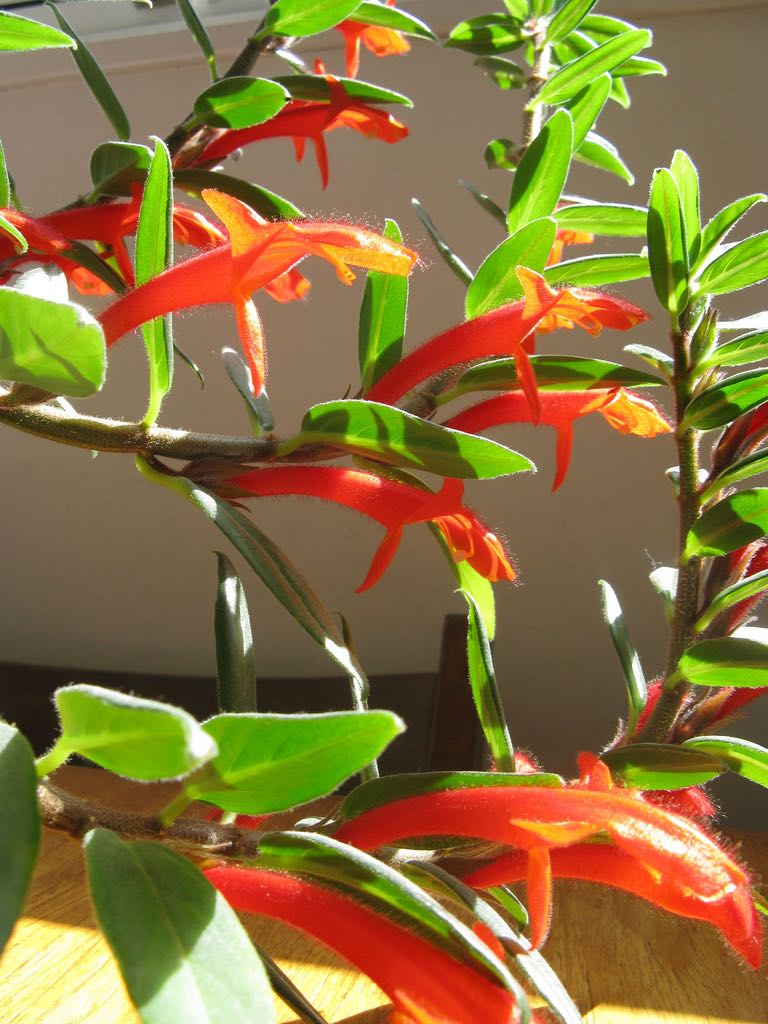
7. Goldfish Plant
A tropical plant known for its unique blossoms, the goldfish plant is named so because its flowers look like goldfish. The goldfish plant, featuring long and arching stems, looks beautiful in hanging baskets and can be grown indoors quite easily.
Goldfish plants require plenty of bright indirect sunshine, good ventilation, and high air humidity to blossom. Goldfish plants prefer fertile potting mix that is rich in nutrients, airy, not dense, drains well, and has a pH range of about 6 – 7. To naturally enrich the soil, you can add some compost to the potting mix or a half-strength fertilizer.
Water the goldfish plant only if the top of the soil feels dry. As it thrives in moist soil, water the plant until water is clearly coming out of its container’s drainage holes. This is a key indicator that it has been thoroughly watered. If you notice green leaves falling off the plant, then you have over-watered or under-watered the plant.
You can aggressively prune back goldfish plants for a bushier growth that produces more blossoms; or can allow it to grow more naturally. Either way will lead to a gorgeous plant.
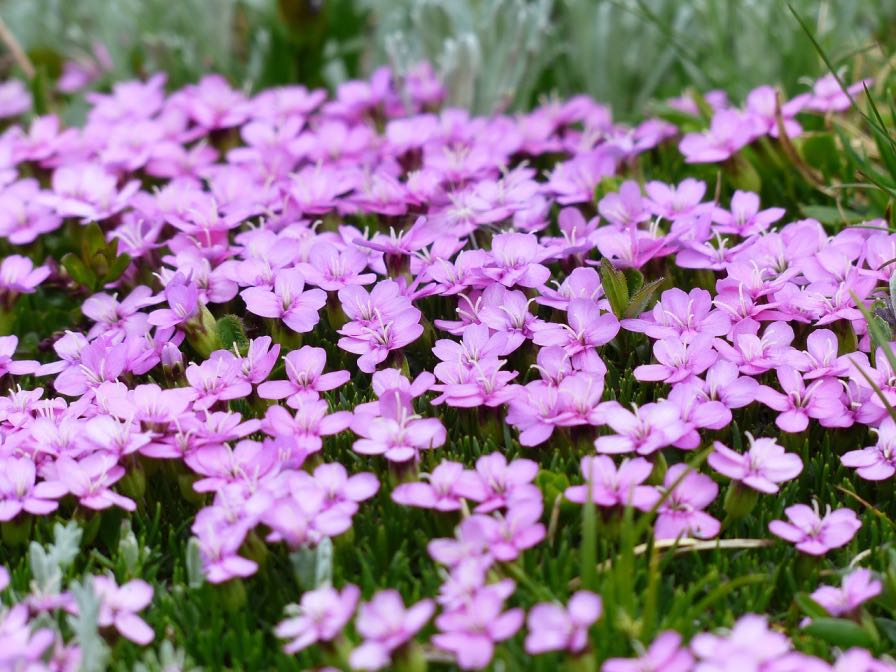
8. Alpine Pink (Dianthus)
Native to the mountains of Southern Europe, alpine pink is a stunning perennial plant that features colorful blossoms and dark green needle-like foliage. With the flowers available in a variety of colors, alpine pink can brighten and liven up any dull corner of your home.
Alpine pink plants grow well when they receive loads of bright sunlight for a minimum of 6 – 8 hours per day. Alpine pink plants prefer soil that is fertile, drains well, is airy, and is rich in nutrients. To naturally enrich the soil, apply a layer of mulch or compost to the potting mix or mix in some slow-release fertilizer.
Water the alpine pink plant only when the top layer of the soil is dry to the touch. To prevent mildew, keep the foliage of the plant dry and aim to water only the soil. Prune away dried or matured leaves and flowers to stimulate new growth.
Alpine pink is actually part of a larger group of plants called Dianthus. These plants are very similar but can vary in color and size.
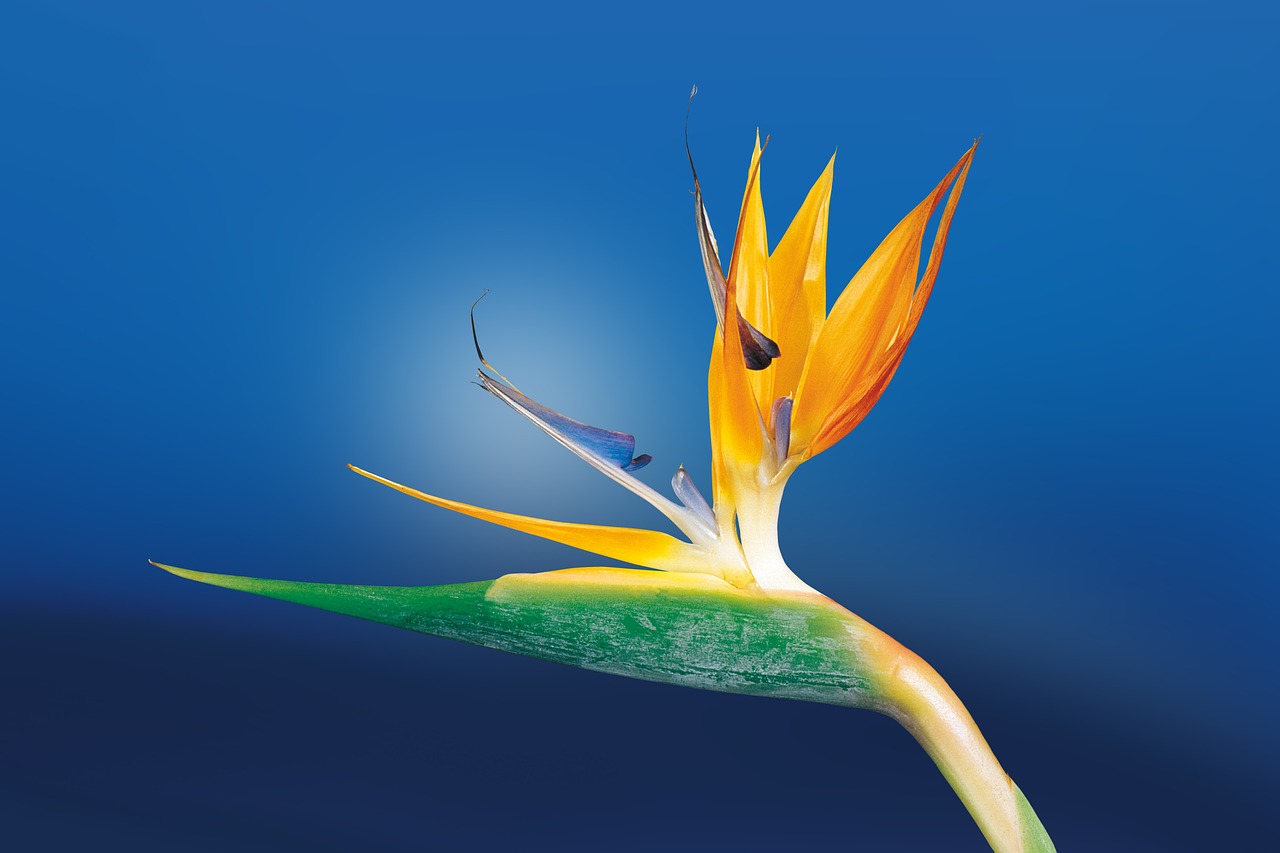
9. Bird of Paradise
A tropical plant producing beautiful flowers, the bird of paradise plant is named after the eponymous birds the flowers resemble. Attractive and magnificent, the plant brings drama and adds flair to any room it is grown in.
While the glossy leaves are large and thick, they can easily be grown indoors with a little maintenance. Bird of paradise loves indirect sunlight, high air humidity, and good ventilation. As the plant is poisonous to pets and small children, keep it out of reach. Cats are especially known for trying to snack on the leaves.
Choose a large container that leaves a lot of space for the large roots to grow. This plant has a large root system, so choosing a pot too small may stunt its growth. You’ll want at minimum a 10-inch pot, but moving up to a 14-inch one will allow the plant to grow a bit larger.
It is also important to use potting soil that is rich in nutrients, well-draining, loose, airy, and is around a pH range of around 6 – 7. You can also add some compost and loam to naturally enrich the soil. You should also be adding fertilizer in the spring as this plant is a heavy feeder. Slow-release pellets can be added in the spring, otherwise use a liquid fertilizer every 1-2 weeks during its growing season.
As the bird of paradise thrives in moist soil, water generously and frequently while ensuring the water runs off properly. Prune away old and dry leaves and flowers to stimulate new growth.
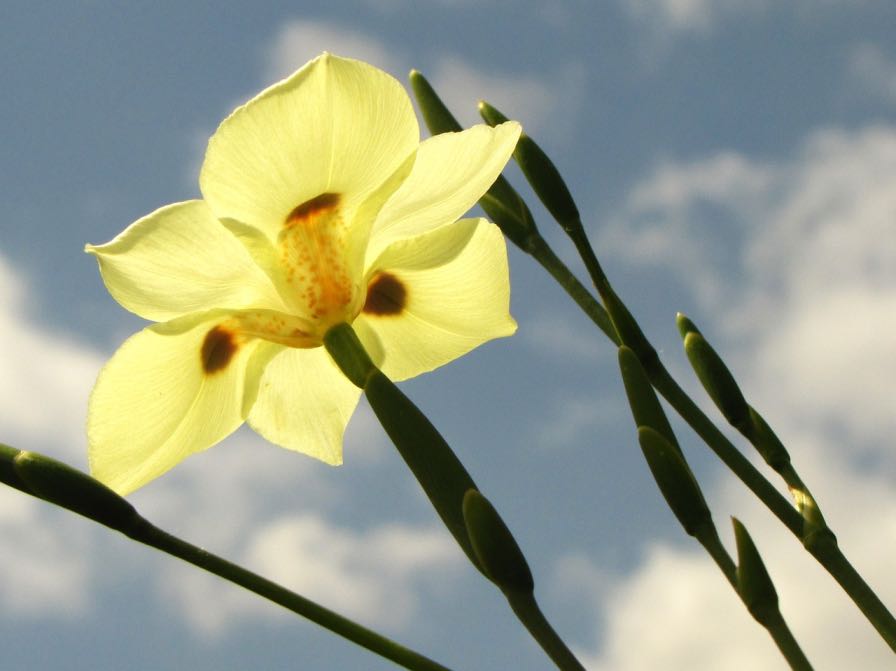
10. African Iris
A striking and hardy plant featuring white blossoms and spiky foliage, African iris plants are our last exotic plant. Growing African iris plants indoors is very easy as the plant requires very little maintenance. If you are a novice when it comes to gardening, African iris plants are a safe bet as they are quite easy to grow.
Loving bright sunlight, African iris plants need 6 – 8 hours of sunlight and good ventilation. Keep it away from drafts and large temperature changes as this can damage the plant. Drafty windows during the winter can cause big problems as can heating or cooling vents.
It is important to use a potting mix that is rich in nutrients, well-draining, loose, fertile, and airy. For lush growth, feed the plant with general-purpose fertilizer once every week during its growing season in the spring/summer.
Water the plant when the top of the soil is dry to the touch. If you are unsure, press your thumb into the top soil and feel for any dampness. If there is not any, it is time to water the plant. While the African Iris is fairly drought tolerant, it does grow best when it gets proper watering. For best results, get into a consistent routine for watering and feeding.
You only need to prune away dried and dead flowers and leaves to promote new growth. However, be careful not to cut away entire flower stems.
Best Exotic Plants To Grow Indoors
Stepping out of the norm can be an exciting experience, and we hope we’ve given you some ideas on new plants to grow. Having a unique plant can add immense beauty to your home, and is always the center of attention for any room it’s in. So, with the above 10 exotic house plants, start enjoying the benefits and joy of growing amazingly exotic plants inside your homes.
Growing Exotic Plants FAQ
What is The Best Exotic Plant To Grow Indoors?
Our picks are the African iris and the oxalis. Both of these are relatively easy to care for and add a lot of beauty to any area they're grown in.
Are Exotic Plants Hard To Grow?
It really depends on the variety of plants, some are easier while others are more difficult. In general, the further out of a plant's natural climate you're growing the more difficult it will be. Luckily, growing indoors gives us much more control over the environment, which can make it easier to grow many exotic plants.
What Type Of Care Do Exotic Plants Need?
Their care is very similar to other plants and varies based on the type of plant. In many cases though, look to have a higher temperature and humidity than many other traditional plants.

